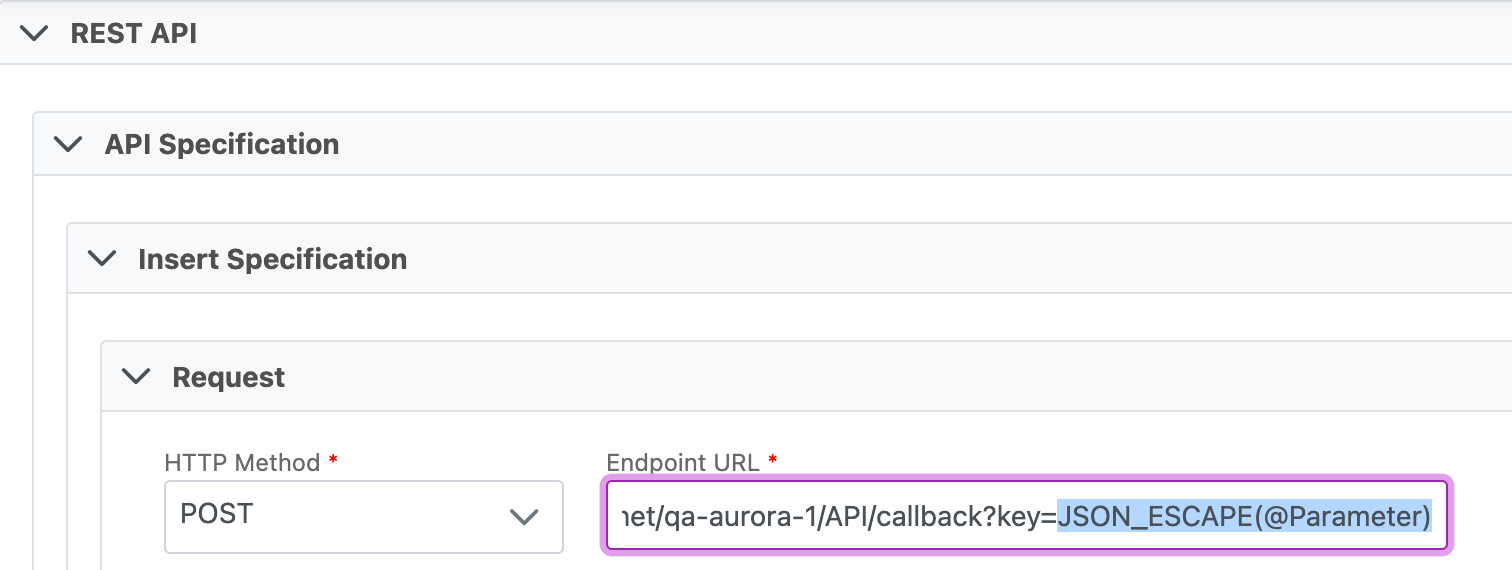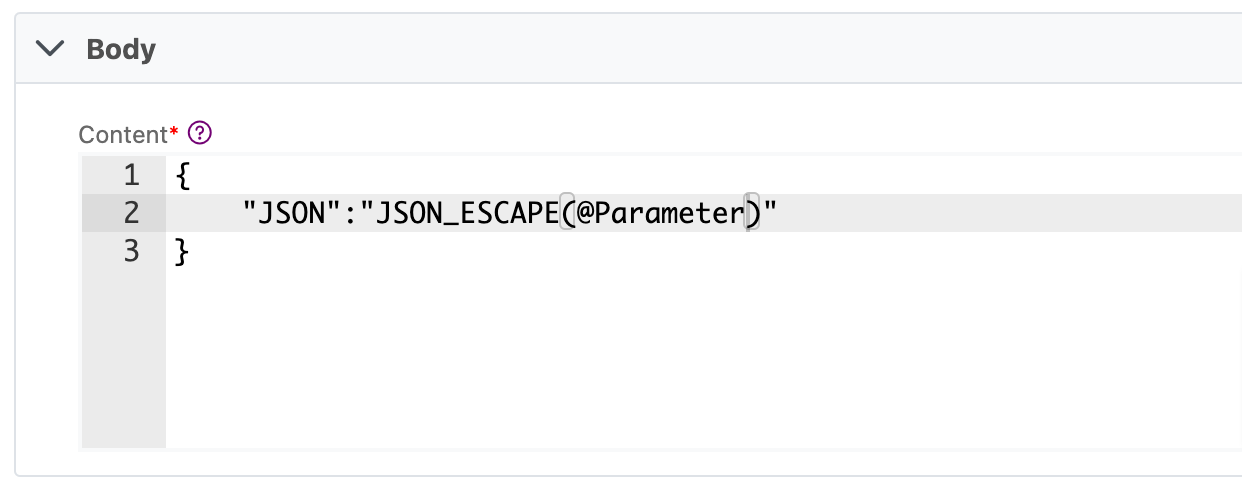Connections functions
Overview
The set of functions listed in this page are for use in the Cinchy Connections when configuring data syncs.
@COLUMN
Use @COLUMN for dynamic column referencing in data syncs, specifically for mapping Cinchy sources to REST or SOAP destinations.
Syntax
For real-time syncs, the syntax is @COLUMN(). For example, @COLUMN('Customer')
For batch syncs, the syntax uses the mapped target column. For example, @COLUMN('$.Customer')
The following snippet links the @COLUMN mapped to Name to employeeName in a real-time sync.
{
"employeeName": "@COLUMN('Name')"
}
Example
The following example uses a Cinchy Table as a Source with a REST API destination.
This scenario will map data from a table called Employees that contain two columns: Name and EmployeeID. We will map the Name property in a Cinchy Table to the REST API destination property employeeName.
- In the Source tab, set the source to Cinchy Table.
- In the Schema section, define your columns for
NameandId:
Id, with a Data Type of Number.Namewith a Data Type of Text.
-
In the Destination tab, go to REST API > API Specification > Insert Specification > Request and select POST with an endpoint URL.
-
Enter the mapping into the Body. Use
@COLUMN, then append the name to link it to theNamecolumn of the Cinchy Table, as shown in the sample below:{
"employeeName": "@COLUMN('Name')",
"id": "@ID"
}
JSON_ESCAPE
This function escapes reserved or special characters in parameter values in a JSON document, making it possible to insert them into strings.
Use this function in any REST API connection that accepts parameters, such as URL endpoints, Request Body, or Post-Sync Scripts.
Syntax
JSON_ESCAPE(@Parameter)
Example 1
The following example shows how you would use JSON_ESCAPE in your REST API URL (Image 1).
This example uses an API and adds a value (@Parameter) that contains double quotes -- this could break the JSON structure, so you need to wrap the parameter with JSON_ESCAPE().

Example 2
The following example shows how you would use JSON_ESCAPE in your REST API Request Body (Image 2).
This example uses an API and adds a value (@Parameter) that contains double quotes -- this could break the JSON structure, so you need to wrap the parameter with JSON_ESCAPE().

URL_ESCAPE
Use this function in Connections to escape parameter values for use inside a URL without breaking it
This function can be used in a REST API connection anywhere that allows parameters to be, such as the URL endpoint, the Request Body, or a Post-Sync Script.
Syntax
URL_ESCAPE(@Parameter)
Arguments
| Argument | Description |
|---|---|
| Parameter | The parameter value that you want to escape for use inside a URL without breaking it |
Example 1
The following example shows how you would use URL_ESCAPE in your REST API URL (Image 3).
This example uses an API and adds a value (@Parameter) that contains the "&" symbol to the URL field. To properly read the URL, you need to wrap the parameter with URL_ESCAPE(), which will escape the & to be %26.

STRING_ESCAPE()
The STRING_ESCAPE() function escapes single quotes in data sync parameters by adding two single quotes. It can be used to wrap around parameters or column references respectively. This can be useful when you use it in a post sync script's CQL.
Syntax
STRING_ESCAPE(@yourparameter)
Or
STRING_ESCAPE(@COLUMN('yourcolumn'))
Or, when used inside of a post sync script or the sync body:
STRING_ESCAPE("@yourparameter")
Example
The example below uses a string escape for the last name to catch any single quotes, such as O'Connell.
"@lastname": "STRING_ESCAPE("@COLUMN('$.LastName')")",
@ID
The @ID function is specific to full file syncs. One of its primary uses in data syncs where the source is Cinchy Event Broker and the destination is a REST API to reconcile specific properties.
Syntax
{
"id": "@ID"
}
Example
The following example uses the Cinchy Event Broker as a Source with a REST API destination.
This scenario updates the data from the employeeID property to the source. The example below is a REST API response from our destination.
{
"data": [
{"employeeId": 1,
"name": "John"
},
{"employeeId": 2,
"name": "Ravi"
}
]
}
Under REST API SOURCE, configure your endpoint to the URL of the API request. For this example, your response format would be JSON, your Records Root JSONPath is $.data, and your ID Column is $.employeeID.
With this configuration, your @ID is now mapped to the data.employeeID in your JSON file.

Under REST API > API Specification > Update Specification > Body, the following content maps the id property to the @ID function:
{
"key":"@COLUMN('Name')",
"id": "@ID"
}
Calculated column functions
There is a specific set of functions supported within calculated columns in Connections:
| Function | Details |
|---|---|
| CONCAT(colA, colB, 'literal value1', 'literal value2') | Concatenates multiple columns, parameters or literal values together. Supports two or more parameters. |
| row_number() | This is the numeric row number of files (Excel, delimited, fixed width). Currently not supported in conjunction with other formulas/parameters. |
| isnull(colA,'alt value') | If the first column is null, use the second value (can be a literal or another column). |
| hash('SHA256',colA) | Hashes the column using the algorithm specified. It is recommended to salt any values prior to hashing them. |